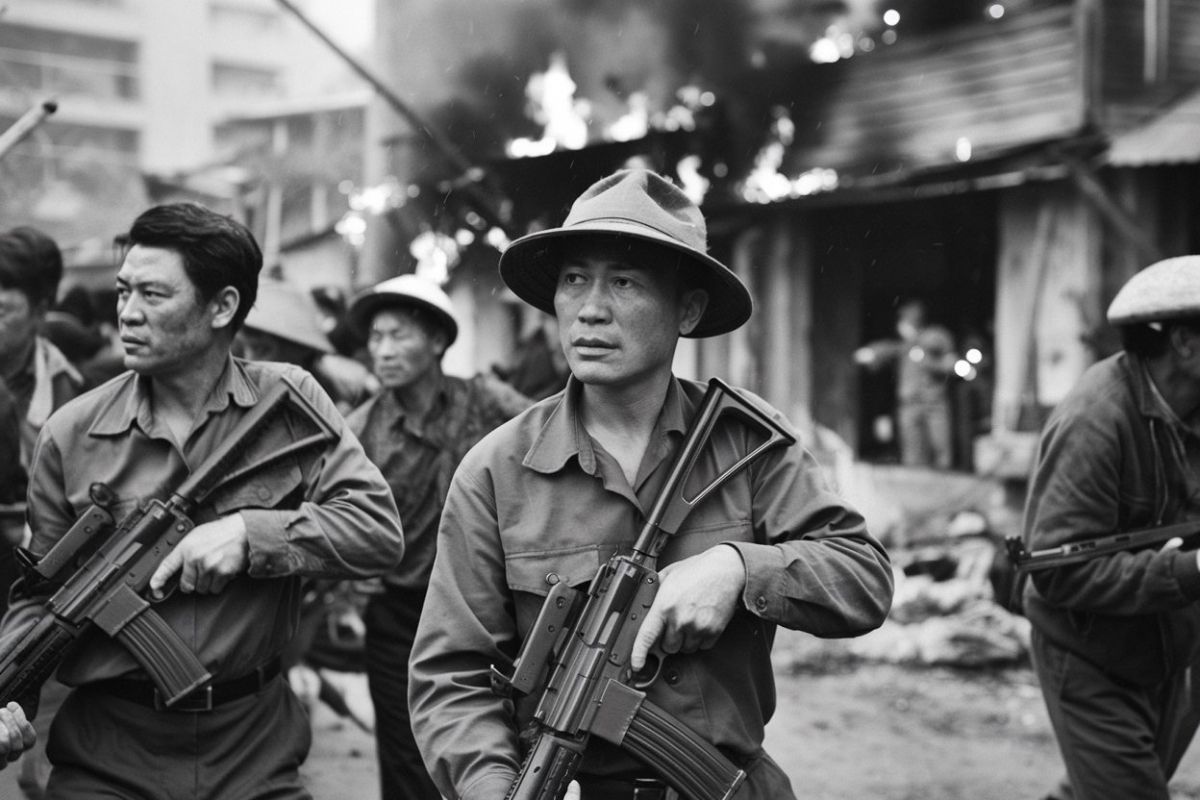
What sparked the Quỳnh Lưu Uprising? The Quỳnh Lưu Uprising was ignited by widespread discontent among the people of Quỳnh Lưu district in Vietnam. This unrest stemmed from oppressive policies, heavy taxation, and forced labor imposed by the ruling authorities. The local population, primarily farmers, faced severe hardships and exploitation, leading to a collective outcry for justice and better living conditions. The uprising, which took place in 1956, saw thousands of people rallying together, demanding reforms and an end to their suffering. This significant event highlighted the resilience and determination of the Quỳnh Lưu community in their fight against injustice.
Key Takeaways:
- The Quỳnh Lưu Uprising in 1956 was a response to harsh government policies, leading to protests, violence, and government crackdowns. It remains a symbol of resistance and inspires movements for justice.
- The uprising had a lasting impact on Vietnamese society, leading to increased repression, strengthening of the regime, and inspiring future generations to continue the struggle for justice.
The Quỳnh Lưu Uprising: A Brief Overview
The Quỳnh Lưu Uprising was a significant event in Vietnamese history. It took place in 1956 in the Quỳnh Lưu District of Nghệ An Province. This uprising was a response to the policies of the North Vietnamese government during the early years of the Democratic Republic of Vietnam.
Key Events Leading to the Uprising
Understanding the context and events that led to the Quỳnh Lưu Uprising helps grasp its importance.
- Land Reform Policies: The North Vietnamese government implemented land reform policies that aimed to redistribute land from landlords to peasants. These policies often led to harsh measures and executions.
- Economic Hardships: Many peasants faced economic difficulties due to the redistribution of land and resources, causing widespread discontent.
- Political Repression: The government’s strict control over political activities and suppression of dissent fueled anger among the population.
- Forced Collectivization: The push for collectivization of agriculture disrupted traditional farming practices and livelihoods, leading to resistance.
- Religious Persecution: Religious groups, particularly Catholics, faced persecution, adding to the unrest.
The Uprising Unfolds
The uprising itself was marked by several key events and actions taken by the rebels.
- Initial Protests: The uprising began with peaceful protests by peasants demanding better living conditions and an end to oppressive policies.
- Escalation to Violence: As the government responded with force, the protests escalated into violent clashes between the rebels and government forces.
- Seizure of Government Buildings: Rebels took control of several government buildings in Quỳnh Lưu, demonstrating their determination and organizational skills.
- Formation of Rebel Groups: Various rebel groups formed, each with specific goals and strategies to challenge the government.
- Spread of the Uprising: The uprising spread to neighboring areas, gaining support from other discontented peasants and communities.
Government Response
The government's reaction to the uprising was swift and severe, aiming to quell the rebellion and restore order.
- Military Intervention: The government deployed military forces to suppress the uprising, leading to intense battles.
- Mass Arrests: Thousands of suspected rebels and sympathizers were arrested, many of whom faced harsh punishments.
- Public Executions: Public executions were carried out to instill fear and deter further resistance.
- Propaganda Campaigns: The government launched propaganda campaigns to discredit the rebels and justify their actions.
- Repression of Dissent: Any form of dissent was ruthlessly suppressed to prevent future uprisings.
Impact and Legacy
The Quỳnh Lưu Uprising had lasting effects on Vietnamese society and politics.
- Increased Repression: The government intensified its repressive measures to maintain control, leading to a climate of fear.
- Strengthening of the Regime: The suppression of the uprising ultimately strengthened the government’s hold on power.
- Martyrdom of Rebels: Many rebels became martyrs, inspiring future generations to continue the struggle for justice.
- Historical Memory: The uprising remains a significant event in Vietnamese history, remembered for its impact on the country’s development.
- Lessons Learned: The government learned valuable lessons about the dangers of pushing policies too harshly without considering the people's needs.
Cultural and Social Reflections
The Quỳnh Lưu Uprising also influenced Vietnamese culture and society in various ways.
- Literature and Art: The uprising has been depicted in literature and art, reflecting its importance in Vietnamese cultural memory.
- Folk Songs and Stories: Folk songs and stories about the uprising have been passed down through generations, keeping the memory alive.
- Educational Curriculum: The event is taught in schools as part of Vietnam’s history, ensuring that future generations understand its significance.
- Commemoration Events: Annual events and ceremonies are held to commemorate the uprising and honor those who fought.
- Symbol of Resistance: The Quỳnh Lưu Uprising has become a symbol of resistance against oppression, inspiring movements for justice and equality.
Final Thoughts on the Quỳnh Lưu Uprising
The Quỳnh Lưu Uprising stands as a significant event in Vietnamese history. It highlights the resilience and determination of the people against oppressive forces. This uprising wasn't just a local skirmish; it had broader implications for the national struggle for independence. The bravery shown by the participants continues to inspire future generations. Understanding these historical events helps us appreciate the sacrifices made for freedom. The Quỳnh Lưu Uprising is a testament to the power of collective action and the enduring spirit of resistance. By remembering these facts, we honor those who fought and ensure their legacy lives on. This piece of history reminds us that even in the face of great adversity, the human spirit can prevail.
Frequently Asked Questions
Was this page helpful?
Our commitment to delivering trustworthy and engaging content is at the heart of what we do. Each fact on our site is contributed by real users like you, bringing a wealth of diverse insights and information. To ensure the highest standards of accuracy and reliability, our dedicated editors meticulously review each submission. This process guarantees that the facts we share are not only fascinating but also credible. Trust in our commitment to quality and authenticity as you explore and learn with us.
